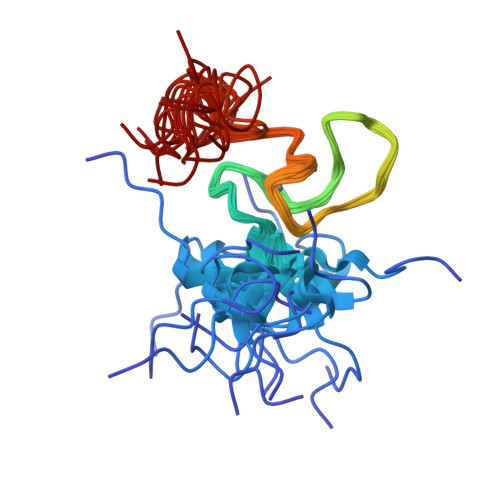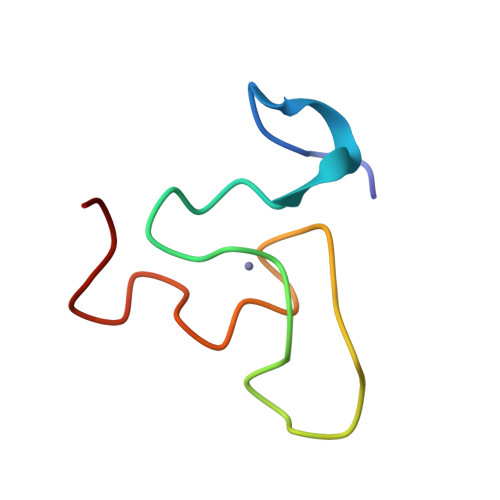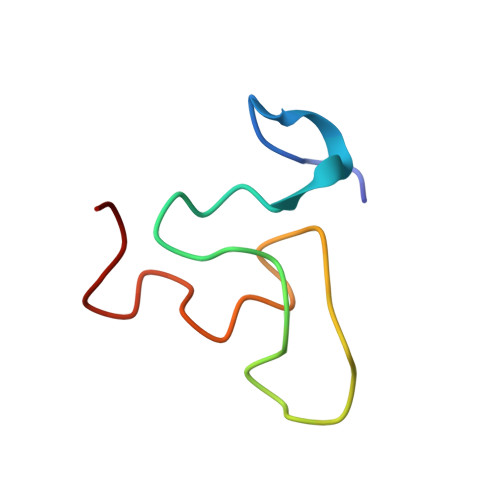Structural and biophysical analysis of the DNA binding properties of myelin transcription factor 1.
Gamsjaeger, R., Swanton, M.K., Kobus, F.J., Lehtomaki, E., Lowry, J.A., Kwan, A.H., Matthews, J.M., Mackay, J.P.(2008) J Biological Chem 283: 5158-5167
- PubMed: 18073212
- DOI: https://doi.org/10.1074/jbc.M703772200
- Primary Citation of Related Structures:
2JYD - PubMed Abstract:
Zinc binding domains, or zinc fingers (ZnFs), form one of the most numerous and most diverse superclasses of protein structural motifs in eukaryotes. Although our understanding of the functions of several classes of these domains is relatively well developed, we know much less about the molecular mechanisms of action of many others. Myelin transcription factor 1 (MyT1) type ZnFs are found in organisms as diverse as nematodes and mammals and are found in a range of sequence contexts. MyT1, one of the early transcription factors expressed in the developing central nervous system, contains seven MyT1 ZnFs that are very highly conserved both within the protein and between species. We have used a range of biophysical techniques, including NMR spectroscopy and data-driven macromolecular docking, to investigate the structural basis for the interaction between MyT1 ZnFs and DNA. Our data indicate that MyT1 ZnFs recognize the major groove of DNA in a way that appears to differ from other known zinc binding domains.
Organizational Affiliation:
School of Molecular and Microbial Biosciences, University of Sydney, Building G08, New South Wales, Sydney 2006, Australia.



















